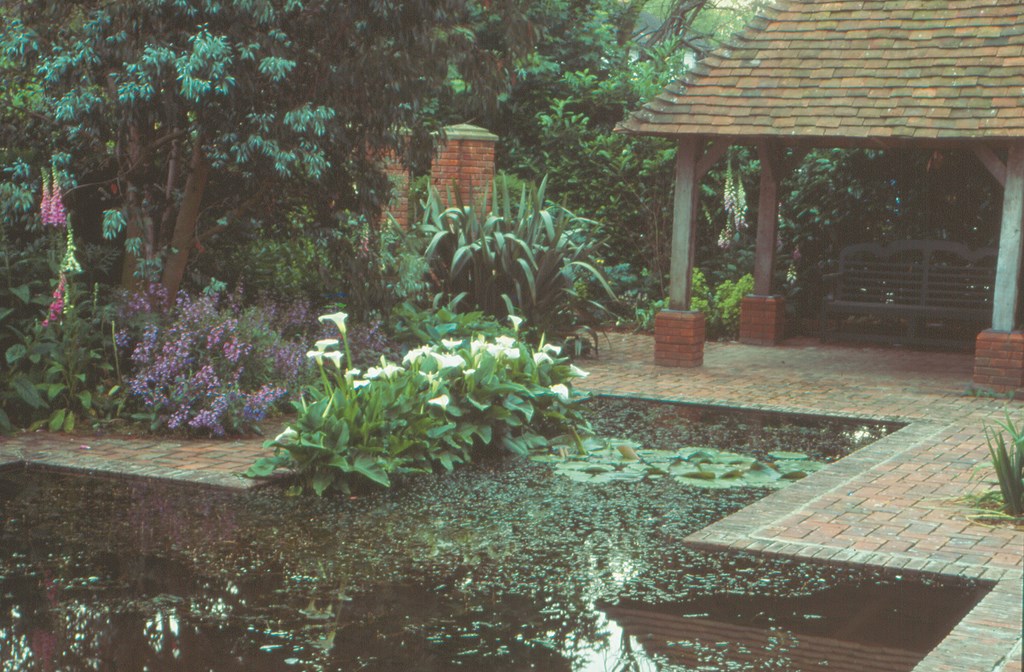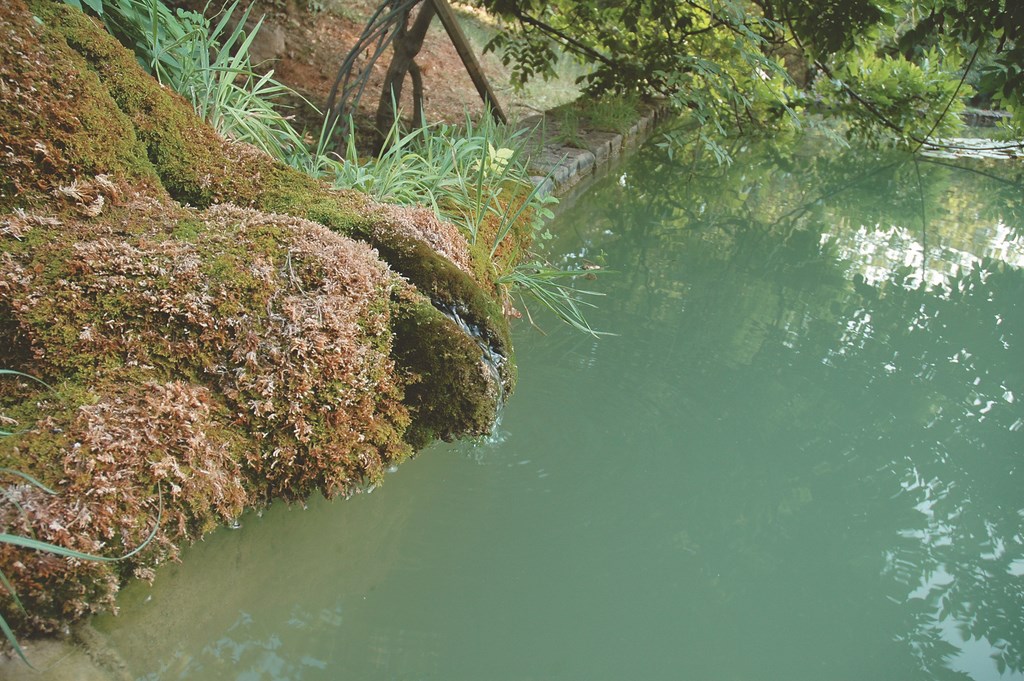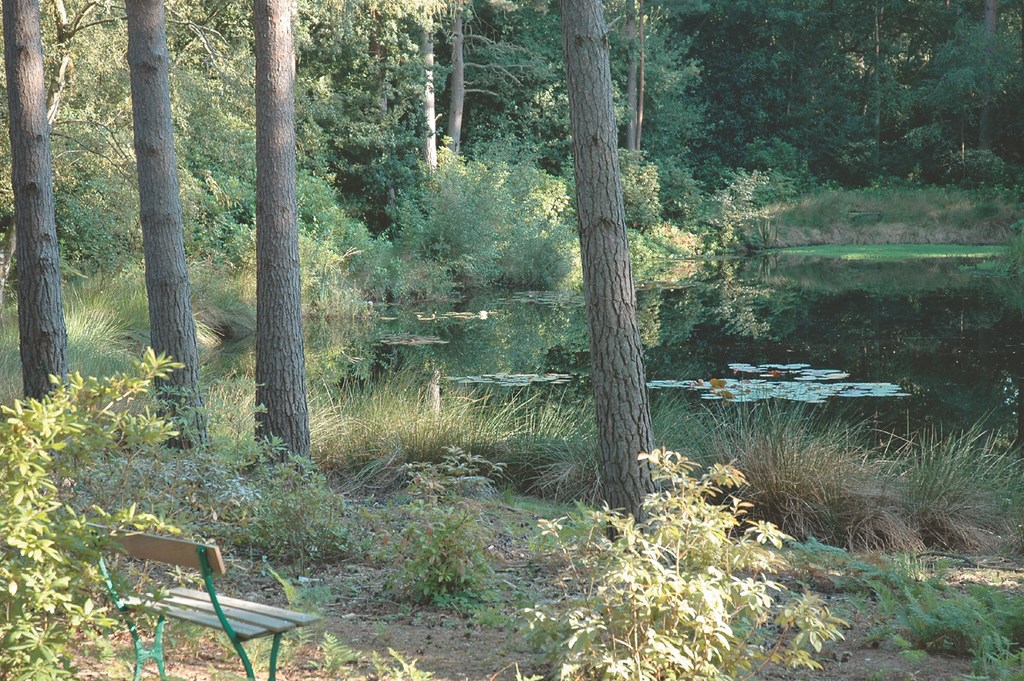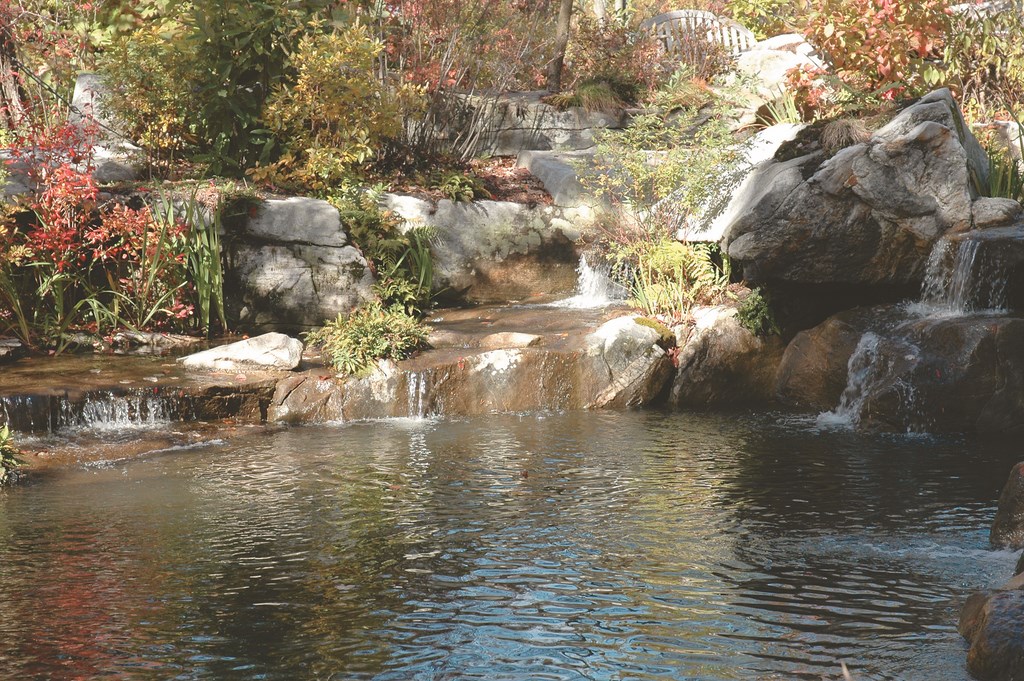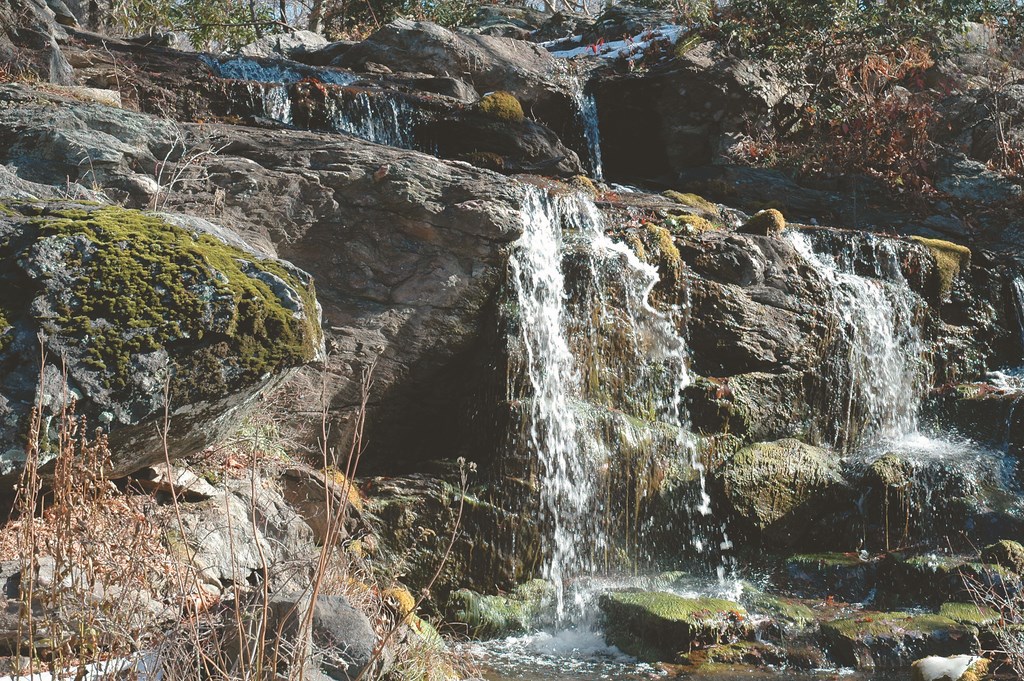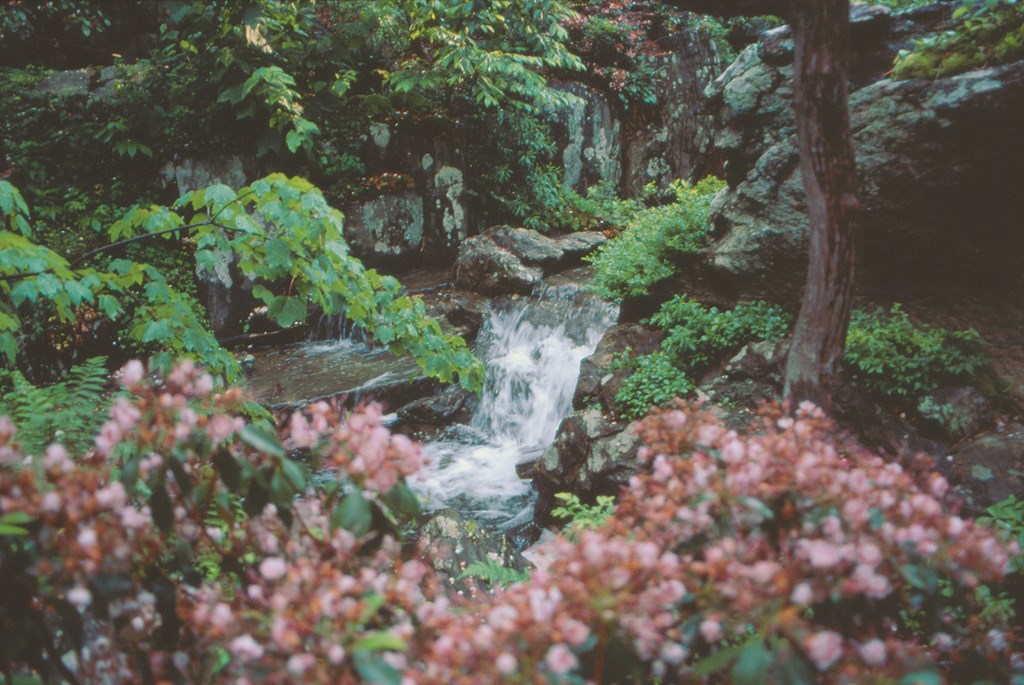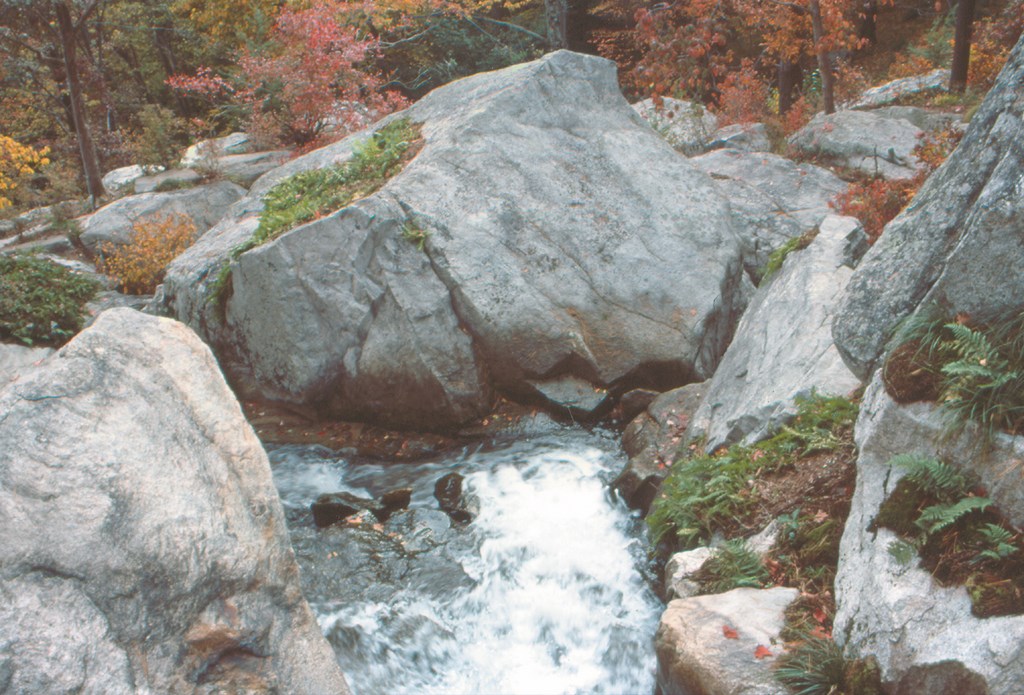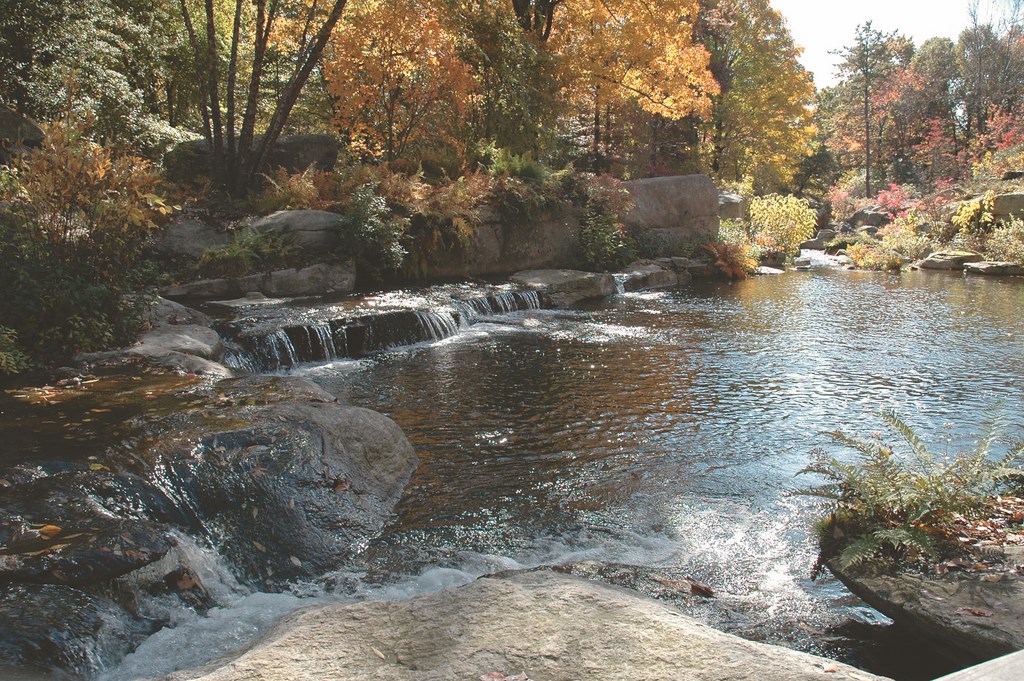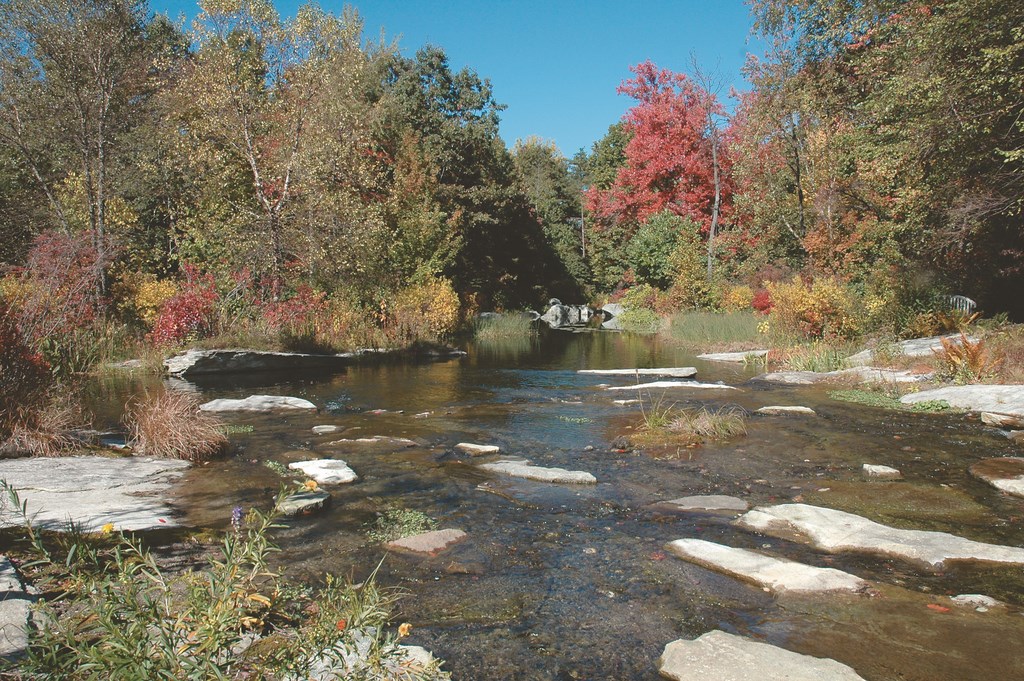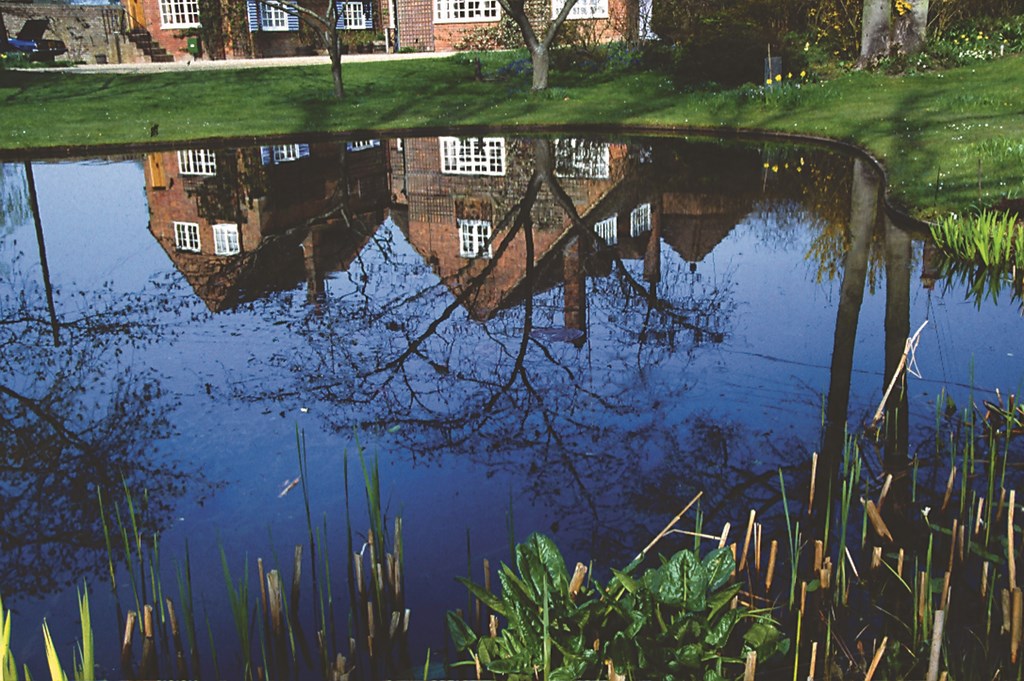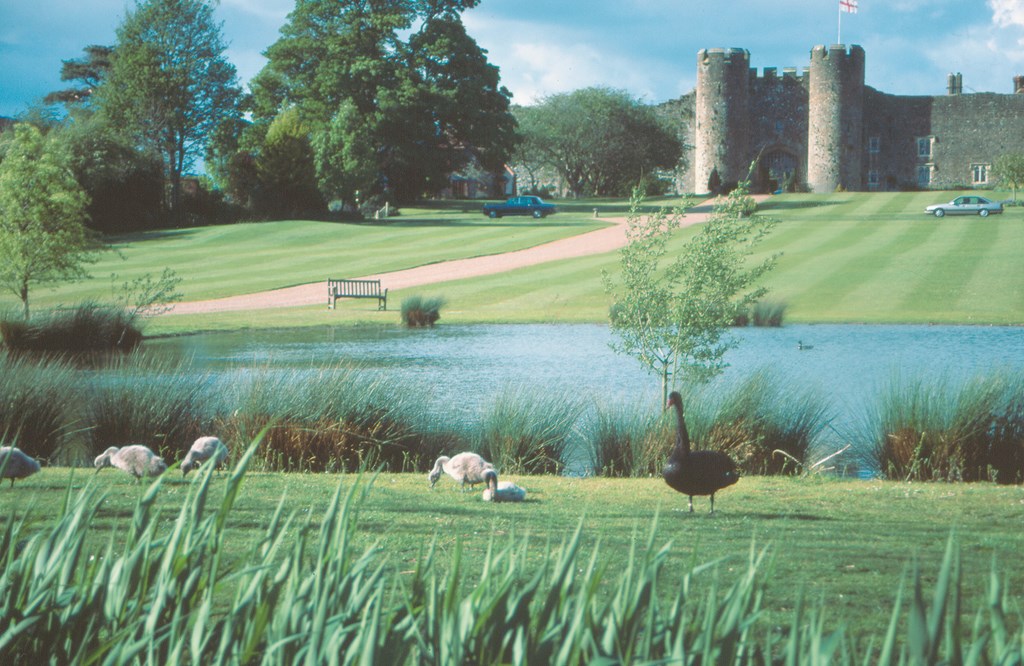Echoes of Enchantment
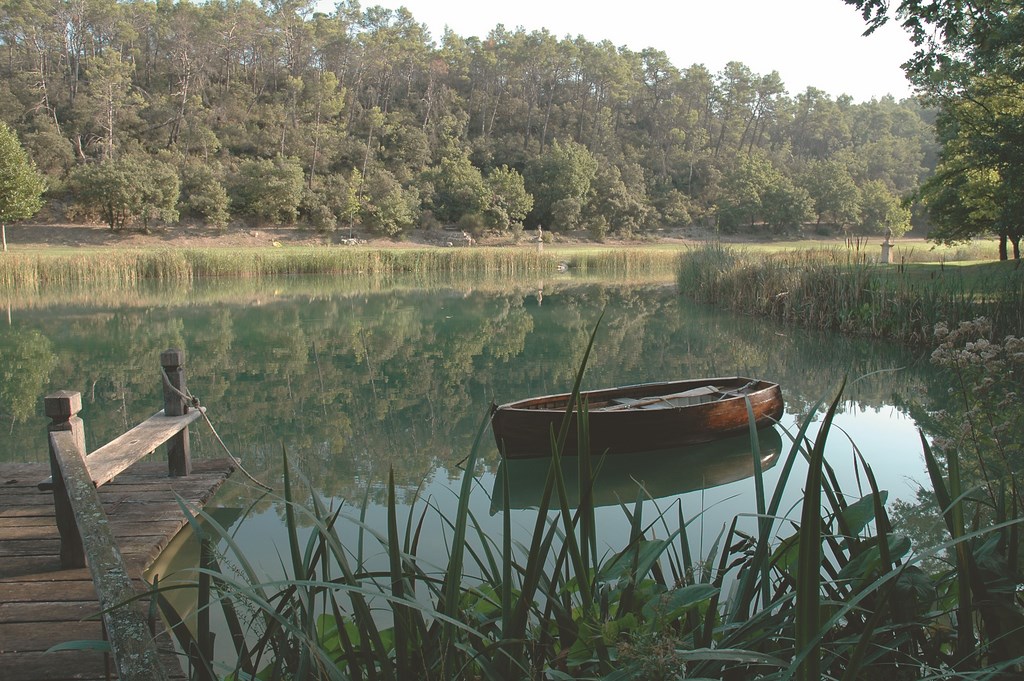
My journey in the company of water began when I was about seven years old, as soon as I was old enough to explore the countryside near my family’s farm in Southern England. It was then that I fell in love with water – wading in streams, making dams out of small rocks, sticks and mud and watching the fish darting in clear pools. Much of my summer vacation was spent on a sun-peeled green punt gliding on a lake and staring down to the bottom at the aquatic plants and water creatures. It was a formative experience.
My parents loved the water, too, and they always had some type of boat. I’ll never forget how almost every one of those modest vessels leaked profusely. This gave all of us first-hand experience of enjoying the water as we developed a visceral appreciation of the importance of controlling it. Only their last vessel – a 98-foot, three-masted schooner – seemed to defy the ingress of water.
Growing up on the series of farms my family owned, I gained the sense that water permeates all aspects of our lives. There were ponds and streams all around us, and irrigation systems with all sorts of structures that contained and distributed water. We raised dairy cows amid fields of oats, wheat and barley and enjoyed a way of life that granted me by the age of ten a familiarity with animals and plants and natural cycles – and all sorts of machinery, including internal-combustion engines, pumps and other mechanical devices.
It was an upbringing that brought me into direct contact with the aesthetic and natural features of water as well as the practical and technical challenges involved in its control and distribution. And those experiences are echoed in each and every project I’ve been fortunate to undertake in the 40-plus years I’ve been working with water – one the most inspiring of all artistic media.
A GUIDING LIGHT
I’m both proud and humbled to work as part of a great tradition of water gardening. In fact, when I built my first pond back in 1963, I did so after picking up a book entitled Perry’s Water Gardening, a text that quickly became my professional bible.
The author, Frances Perry, was very much the doyenne of British watergardening of her era, and I was enchanted by her descriptions of sublime gardens created during the 1920s and ’30s. I made many a pilgrimage to the family aquatic nursery, Perry’s of Enfield, just outside London. Her insights, aesthetic prowess and love of water plants inspire me and many others to this day.
In her book she wrote, “Water gardening has never been as popular as it is today and I don’t believed it’s yet reached its zenith.” Truer words were never written: Although wonderful water gardens were created in her era, it is as though she could see beyond to an unexplored, grand potential awakening within the water industry.
| A BIT OF FORMALITY: Although I generally work in naturalistic forms, I’m sometimes presented with spaces that call for formal detailing. Here, a small octagonal watershape sits in the center of a large rectangular space that contains an herb garden (left). I love using octagons in these contexts because they balance and harmonize with rectilinear spaces while softening them. I also like the low stone walls, which invite the visitor to sit and enjoy the space. In more polished spaces (right), I work with the fact that the hardscape structures in formal/architectural settings can serve to bring the visitor right up to the water’s edge. |
Of course, in works of art (and in almost any creative endeavor, for that matter), nobody can really ever know when the pinnacle is reached and the artistic possibilities have been exhausted. Even today we see a remarkable explosion of interest in the art of water. I feel privileged to be working at a time when one is able to draw on the legacy of some 3,000 years of watergardening history and have all the wonderful modern technology and machinery so readily available.
By the early 1960s, at the time I started working, most ponds were not well constructed or particularly attractive – and they usually leaked. Also, there were relatively few suppliers who offered plants and fish.
Recognizing a void in the market, I started my own aquatic nursery, growing water plants and breeding fish – a natural extension of my childhood interests and, at first, basically a hobby. But as this increasingly became a true commercial pursuit, it became apparent that my passion would in fact become my profession and would ultimately change my life.
Although I would go on to create water and landscapes that would become sources of some pride, the first pond I built was little more than a pool of pea-green water. Just the same, it provided me with one of my earliest revelations about working with water.
Soon after I completed the pond, a heavy rainstorm flooded the area, and several hundred Golden Rudd washed out of a nearby stream, becoming stranded in pools and puddles as the water retreated. I decided to save them, scooping up as many as I could for transfer to my modest little pond.
A SINGULAR MOMENT
When I first released them into my tiny pond, it was so murky that one couldn’t see the fish at all and I wondered whether they would survive the night. When I returned early the next morning, however, I was amazed to find that the water had turned crystal clear:
One could see every grain of sand on the bottom. A shaft of sunlight fell full on the fish. They were circling in a tight school with the light dancing on their red fins.
Overnight, they had managed somehow to filter the pond’s algae through their gills or change the balance to transform the soupy liquid into something of remarkable beauty and fascination. It was, in fact, a most revealing and enchanting experience – and one I shall never forget.
Indeed, whether it’s a pond, a stream, a waterfall or a formal garden, I’m always trying to recapture just this sort of radiant moment that occurs when water, light, life, rock and earth conspire to create a form of beauty that is quite magical. For me, this potency is most perfectly captured when I see small children interacting with fish at the water’s edge as they delight in experiencing the touch of water and the nearness of other life forms.
| MOATED MANOR: As a rule, I like to raise the water level to the very edge of a containment structure and allow the plantings on the edge to encompass the transition from dry land to the water’s surface. In this large project, however, there was one area with an obvious man-made edge (left). Here, I used mature plantings and cascades of green to create a sense that the architectural edge had been there for years and had been engulfed by the natural world. To help visitors relax and spend time near the water, I’ve always thought that the simple presence of a bench (or small deck or pier) invites their participation (middle). I further reward those visitors by having them wonder where the shore is under all the vegetation (right) and use shallow shelves, promontories and coves to create focal points, hidden views and variety along the water’s edge. |
To a large extent, this is why, as challenging as watergardening can be, great fun and fascination are always there for me.
Among the things that are so very gratifying about my work with water in landscapes is that what I do carries all of that same basic potential for fun and fascination whether I’m working on an intimate formal garden or a lake – or anything in between. I’ve been fortunate through my career to work on projects that run the gamut with respect to scale and size and have found that, no matter the scope or style of the work, the responses from clients or people who visit the gardens I’ve developed for public spaces are all very consistent.
I can’t count the number of times that people have told me that they didn’t fully appreciate how therapeutic and restful it is to be near the water. Whatever combination of elements exists in these spaces, it’s evident in such responses that there’s a deeply moving and curative influence at work.
I’m among those who believe that this effect is largely attributable to the fact that we’re composed mostly of water and that when we come into its proximity there takes place some kind of exchange of electrical energy. As a result, water gardens become an art form in which human participation is an absolutely essential element, no matter the size or style of the project.
BASIC FASCINATION
The importance and excitement of human participation with water can be felt in encounters that many of us have shared. Consider the experience of approaching a pond or a stream while you’re on a walk in the wild: As you come to reeds, tall rushes or irises, these plants signify the presence of water even before it can be seen. One feels an increasing excitement at the prospect of the encounter. If you’re lucky, that journey might lead you to a deck, pier or landing that will take you out over the water’s surface.
The same happens with the mere sound of moving water, which is often heard long before it can be seen. One is drawn to it by some inner curiosity, unsure what form it may take but drawn by the anticipation of arriving at a place where it can be seen or touched.
To me, these points of physical access are a passport from the terrestrial world to the aquatic world.
I often think of those liberating times when I have swum naked in lakes, streams or oceans. There’s really nothing like it, that sense of complete freedom and immersion and total contact experienced throughout the skin. I’ll never forget, for instance, the sensations of swimming through the stalks of water lilies, seeing the bobbing beauty of their blooms at eye level on the water’s surface – an amazing and elemental interlude.
| CASCADE STRATEGIES: In the wild, one rarely sees a consolidated sheet of water flowing uniformly over a straight-edge weir. In mimicking nature, I seek to replicate the much more interesting way that waterfalls unfold in natural waterways, with randomly divided flows of water over multiple surfaces of varying shapes (left). The effect is even more convincing if you can use boulders given character by moss, lichen and years of surface wear (middle left) while implementing a widely dispersed, ragged flow to suggest age and wildness. Indeed, the use of surface stone material and lush vegetation is the key to creating the impression that rock formations and plantings have been in place for a long time (middle right), and I also like to use vertical rockwork adjacent to the cascade to give the impression that the water is weathering the bedrock. And if I can use large, bold rocks (right), all the better: With their size, they work to create the impression that formations and streams were pre-existing. |
Even standing dry and fully clothed after a difficult day in the office, simply being near a beautiful body of water engages us in that sort of experience. The sensations associated with water are something that we simply cannot deny when we are in its presence.
In a practical sense, I believe it’s absolutely crucial to keep these sorts of aesthetic and emotional connections with water fully in mind as we go about the hard work of creating any type of body of water. It is essential for the designer, even the contractor, to retain that sense of magic when working on the job site. I know from my own experience how easy it is to become embroiled in the problems and challenges of the construction process, so much so that I always make a point of stepping back to visualize the finished product and take renewed inspiration from a site’s potential when problems inevitably arise.
Let us be under no delusions: As with my family’s boats, water tries hard to find a way through any barriers we establish. The problems that arise when working with water are often profound and will manifest themselves at the slightest opportunity. In fact, anyone who’s worked with water knows the nature and extent of the possible technical challenges, no matter how large or small a given body of water may be.
FORMAL TO NATURAL
In considering the various types of watergardens, they tend to fall into three groups: formal gardens; ponds and lakes; and streams and waterfalls. Working across these categories requires an understanding of their commonalities as well as their important differences.
To a large extent, the site and particularly the architecture of the house or other adjoining structures will dictate the style of an accompanying watershape. One cannot, however, forget the desires of the client: Indeed, I don’t believe in being dogmatic and insisting on a formal garden here or a natural pond there – although I will make suggestions. I work that way because in my experience it’s very rare that client and watergardener can’t come to a point in common where both are comfortable with a decision.
|
The Myth of Scale One of the things we often hear in discussions during the design process is that a pond or some other type of waterfeature should be in proper scale with the site. I bought into that notion at one time, but I had an experience some years ago that bolsters me when I hear someone say that a watershape I’m planning will be much too big for the setting. At the time, I was working for an airline pilot who owned a small, single-story house on a lot approximately two acres in size. He told me that he wanted to skate in winter and do as little mowing as possible, and what he really wanted was a pond that took up as much of the space as possible. My first thought was that the pond would be completely out of proportion and would look ridiculous, but he insisted. So I virtually wrapped the entire house with a pond that measured somewhere in the neighborhood of an acre and a half by the time it was finished. It was a large, informal lake-type vessel backed by trees and shrubs and moisture-loving plants for reflections. A path from the French doors led to a large oak deck that extended out over the water. As I say, I had misgivings – but only until I saw the pond filled with water for the first time. It was a revelation: Instead of appearing as a huge pond overwhelming a small house, it had taken on the look of a lakeside residence. It seemed clearly that the pond had always been there and that the house had been positioned specifically to exploit its proximity to the water. By upsizing the pond, the entire aesthetic of the site had been turned upside down in my mind. It was an extraordinary realization – a success. The pilot had been right. Certainly, success in such cases depends on a client’s requirements. Not everyone wants their yard to be covered in water, but for those who do, the results can be wonderful. The space needn’t be particularly large for the effect to work, nor does the look have to be informal. Indeed, I’ve seen it work at close quarters with formal rectilinear ponds traversed by stone paths. I had a similar epiphany some years later while working with rock: There are those who say that rocks need to be in proportion to the site and to the body of water itself. It’s now my view, however, that a few large ones are much more effective than several small ones and that you cannot have a rock too big. This particular debate occurred in association with a large garden I’ve been building in the state of New York and the issue of whether or not a 250-ton rock would look too big if placed close to the house. Keeping the experience of the large pond by the small house in my mind, I argued that using the massive boulder would give the impression that the home had been built deliberately adjacent to this wonderfully interesting rock instead of vice versa. It was a fabulous rock, covered in ferns, moss and lichen with all sorts of interesting physical features. We placed it next to the house, and it gave a whole new dynamic to the setting as well as interesting viewpoints from the adjacent windows. I now await the next debate, in which I’ll argue that building a waterfall with three huge rocks might be far more convincing than building the same waterfall with 50 small ones! — A.A.W. |
As a rule, however, I find that naturalistic or informal gardens work in a larger percentage of situations, especially where there’s an opportunity to create the illusion that the water was there first. Certainly, it can be difficult in some cases to make natural compositions look at home next to strong, geometric architecture that extends out into the garden. There is little doubt that some properties require a rigid formal treatment. In those cases, I respond with formal designs that complement the surrounding architecture.
That said, however, I have managed on some projects to create streams that appear to enter the property on one side and exit on the other, leaving the viewer with the impression that despite the presence of this natural running water, the homebuilder was able to create formal structures in and around it.
Properties with small gardens can provide a challenge when it comes to creating convincingly informal effects. In these situations, creating oversized bodies of water that encompass the property or, indeed, allowing some of the water surface to extend out of sight can create a sense that the water was there first and that the residence is what has intruded on the natural landscape.
In all cases, I believe you have to use your imagination. In my case, sometimes the specific “idea” for a garden will come very quickly and present itself as a sort of self-evident solution. Other times, the best scheme for a given space may take a tremendous amount of time as I sift through all the possibilities for the right answer.
FINDING INSPIRATION
My best ideas often come to me in the bath so, when stumped, I take a long, warm soak. Sometimes I sift back through time remembering the works of nature and past masters. This can be tremendously helpful. The result is that, through the years, I’ve developed my memory as a sort of internal software that gives me access to a library of ideas that have been put to successful use by others.
| COOL WATER: Whenever I can, I use plantings both at the shoreline and in the water to blur transitions from the terrestrial to the aquatic environment. In such settings, concealed views create a sense of mystery and draw the visitor more deeply into the space (left). In large, open areas, I will sometimes “enchant” visitors by using flat rock material over broad, shallow riparian areas to suggest that the water has been eroding natural sedimentary layers and smoothing their surfaces (right). It’s an open invitation to wading and fuller participation in the environment. |
I never copy those ideas – and I don’t think it’s even possible to do so, really – but so often there are concepts that can be followed in the works of the greats in gardening. They are too numerous to list here, but aside from the old classics I take much inspiration from the late Roberto Berle Marx with his bold, sweeping interplay of foliage and textures. There’s also my good friend and mentor, John Brookes, who first suggested that I write The Water Gardener and has given me much insight through the years. His lateral thinking and refreshingly new designs as well the wealth of gardening books he has written have broadened my approach to garden design.
In studying these exemplars, we may not find hard and fast rules about when to use a formal design or a natural approach, but we can find terrific clues and inspiration through seeing the ways that others have chosen to meet given challenges.
I can honestly say that in all my explorations of watergardening, the only thing I truly cannot abide is repetition. To me, it’s counterintuitive to think that one set of solutions will work across the vastly different conditions that are presented by the rainbow of settings and clients we encounter, so I’ve worked hard to free myself of any one stereotype or scheme – which I find to be a big part of why I’ve been able to work across a wide spectrum of designs so fluidly.
I take pride in the fact that in my work, no two of my watershapes have ever been the same.
| PICTURE PERFECT: I often use lawns as a means of managing transitions from more organized areas near structures to the wildness of plantings and ponds beyond. This lends the impression that the water has always been there but that one side of it has been tamed to accommodate the presence of architecture. |
There’s a balance, of course, that one must find between ones own ideas and preferences and those of the client. Most of us know that our most crystalline ideas can be diluted as a result of these dialogues and that success in winning the job can mean setting aside our egos, but that doesn’t relieve us of the need to apply our artistic skills and sensibilities as we work with the parameters at hand. We should settle for nothing short of the best we can achieve and be constantly pressing for ever-increasing excellence.
I try never to forget that at the end of the day, it is the clients who must live with my work and that I am the one who gets to move along to the next project. In other words, they are the ones who will see the work on a daily basis and, one hopes, gain from this new, watery addition to their lives. If I can make things work while remaining true to my own instincts, sensibilities and beliefs, then I am satisfied that I have done something special.
The tool belt of skills and the vocabulary of specific features we carry with us is hugely important in finding that success. Perhaps more important, however, is an ability to draw upon the abiding love of water I assume most of us possess and upon the revelatory experiences that have led us on our creative journeys in the first place.
Anthony Archer Wills is a landscape artist, master water gardener and author based in Copake Falls, N.Y. Growing up close to a lake on his parents’ farm in southern England, he was raised with a deep appreciation for water and nature – a respect he developed further at Summerfield’s School, a campus abundant in springs, streams and ponds. He began his own aquatic nursery and pond-construction business in the early 1960s, work that resulted in the development of new approaches to the construction of ponds and streams using concrete and flexible liners. The Agricultural Training Board and British Association of Landscape Industries subsequently invited him to train landscape companies in techniques that are now included in textbooks and used throughout the world. Archer-Wills tackles projects around the world and has taught regularly at Chelsea Physic Garden, Inchbald School of Design, Plumpton College and Kew Gardens. He has also lectured at the New York Botanical Garden and at the universities of Miami, Cambridge, York and Durham as well as for the Association of Professional Landscape Designers and the Philosophical Society.












